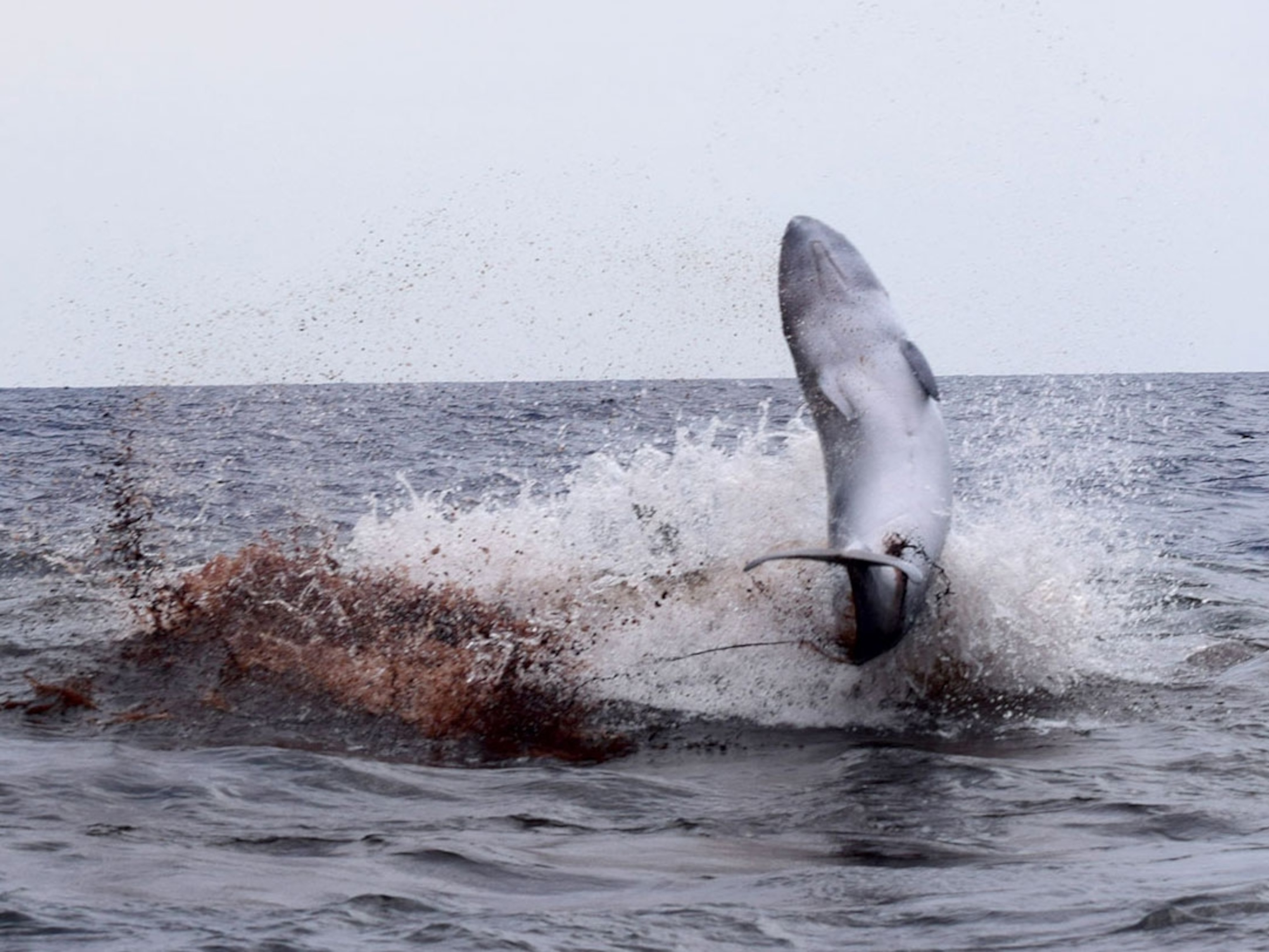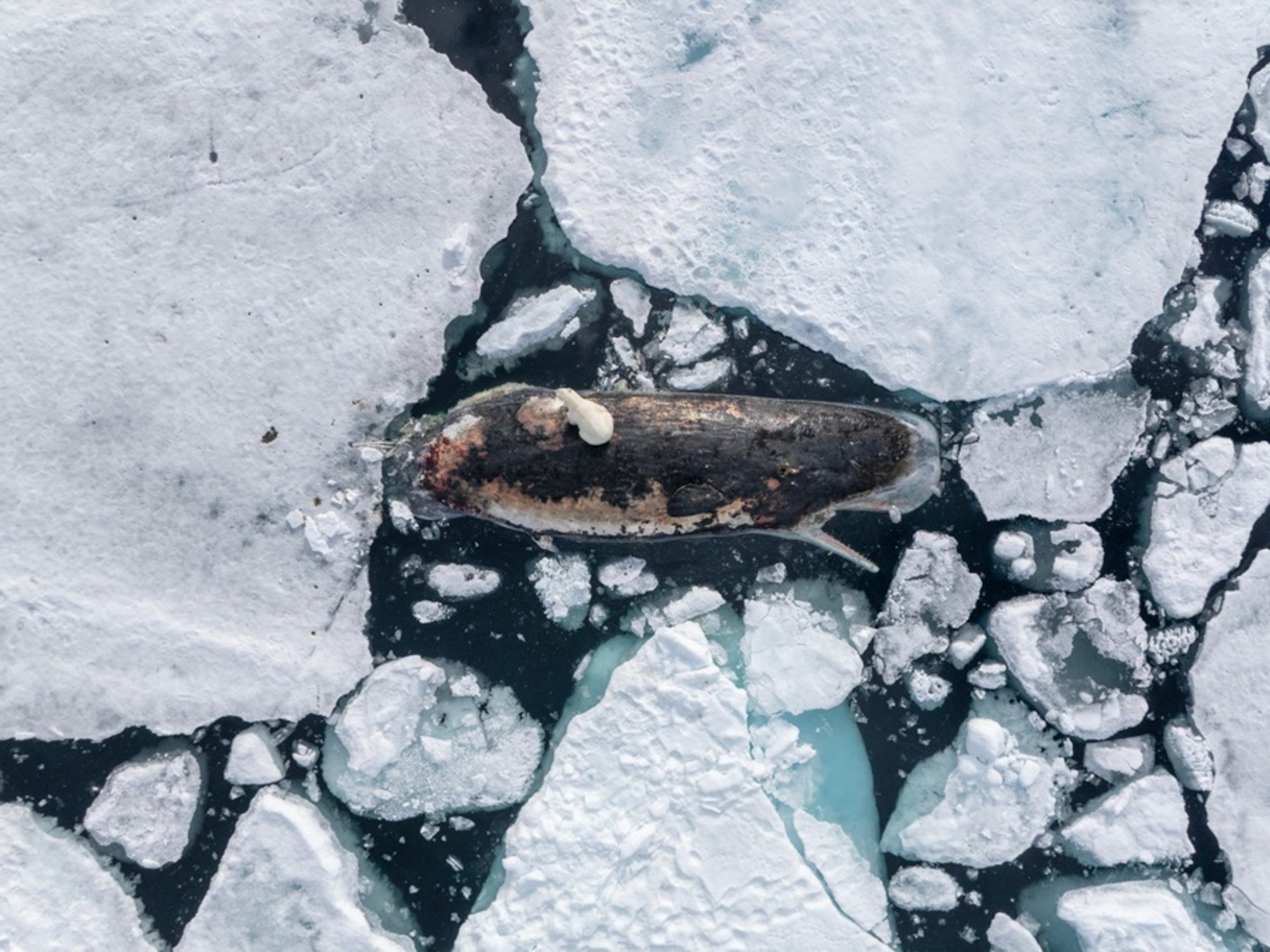Rare Video Captures Never-Before-Seen Whale Behavior
An underwater video reveals two humpbacks flapping their flippers to propel themselves forward.
Balanced precariously on a dinghy in the churning ocean off South Africa, biologist Paolo Segre had a challenging task: Attach a hamburger-size video camera to a 60-ton humpback whale.
Not only that, Segre had to attach the camera to the whale's broad back with a pair of suction cups while using a 20-foot pole and avoiding the animal’s tail, which could sink the boat (and Segre) with a single slap.
Segre, a biomechanics postdoctoral student at Stanford University, was in the southern Atlantic studying humpback whales' secret lives below the surface. (Get an incredible whale's-eye view of Antarctica.)
His video, however, captured something completely unexpected about the world's most well-known whale species.
Back at his California laboratory, Segre was surprised to see two humpbacks using their front flippers to propel themselves forward while lunging for food. Scientists have long thought the animals use these flippers only to steer their massive bodies in the water.
“It looked just like a bird flapping its wings,” Segre says. “Until two years ago, we had no idea what whales were doing underwater.”
The work, published July 10 in Current Biology, is the first time researchers have observed and documented this behavior.
Energy Boost
A humpback whale fuels its 45-foot-long body with tiny shrimp called krill and other small plants and animals called plankton. To gather enough krill for its massive size, the humpback whale lunges forward while opening its mouth to gather a giant mouthful of seawater.
The whale then spits the water back out through plates of baleen that filter out the tiny prey. (Also read: "Mysterious New Humpback Whale 'Song' Detected?")
Whales lunge hundreds of times each day, which requires a substantial amount of energy.
“It’s like driving in stop-and-go traffic. All that acceleration and breaking is hard on your fuel economy,” adds Frank Fish, a marine biologist at Pennsylvania's West Chester University who was not involved in the new study. All this flipper flapping, then, appears to provide a much needed energy boost to heaving that giant body.
Fish notes that before this study, scientists "had looked at humpback flippers like static airplane wings." (Read how we brought humpback whales back from the brink of extinction.)
Like a jumbo jet, it was thought that whales steer by banking with their flippers. The rear flukes—the large appendage on a whale's tail—provide the thrust, like jet engines.
Now, "what’s exciting is that we see whales using their flippers for winged propulsion, just like birds.”
Flying Underwater
The humpbacks' movement is analogous to a person standing with her arms outstretched, swinging them inward until the palms meet in front of her chest, and spreading them wide again.
It’s a common behavior seen in birds and other flying animals. Other marine species, such as sea lions and sea turtles, also use this maneuver to push themselves through water.
A hydrodynamic analysis of the humpback's movements in the lab confirmed that both the upstroke and the downstroke of its flippers provide forward thrust. (See amazing pictures of humpbacks.)
Flipper flapping is not a repetitive motion used for swimming, nor is it frequent—the whales did it briefly, and only once, when they start lunging for their food.
Mystery of the Deep
The study has its limits, Fish cautions.
The cameras couldn’t record what the flukes were doing while the flippers moved, so no one knows whether the flippers powered all the whale’s propulsion at that moment, or whether the flukes helped.
Segre also only documented the behavior in two individuals. Although it’s enough to prove humpbacks do flap their flippers, it’s not clear how common the behavior is among humpback whales.
Just consider it another whodunit to add to the mysteries of the deep.
Carrie Arnold is a Virginia-based science and nature journalist who loves spending her free time outdoors. Follow her on Twitter.




